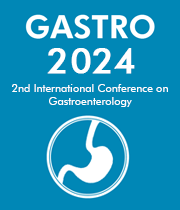Title : Comparison of minocycline and ornidazole-containing bismuth quadruple therapy and classical quadruple therapy as first-line for helicobacter pylori eradication: A prospective, multicenter, randomized clinical trial
Abstract:
Background:
The clinical application of bismuth quadruple therapy is often challenging due to the frequent adverse reactions and complicated administration of tetracycline and metronidazole. The aim of this study was to assess the efficacy, compliance, and safety of minocycline, ornidazole, esomeprazole, and bismuth (MOEB) therapy as a first-line regimen for Helicobacter pylori eradication compared to classical bismuth quadruple therapy.
Methods:
390 patients with Helicobacter pylori were randomly assigned to receive either classical bismuth quadruple therapy (ACEB) or modified bismuth quadruple therapy (MOEB). The ACEB regimen consisted of 1 g amoxicillin, 500 mg clarithromycin, 20 mg esomeprazole, and 220 mg bismuth potassium citrate, twice daily for 14 days. The MOEB regimen consisted of 100 mg minocycline, 500 mg ornidazole, 20 mg esomeprazole, and 220 mg bismuth potassium citrate, twice daily for 14 days. The 13C-urea breath test was performed 4-6 weeks after treatment to determine eradication.
Results:
The intention-to-treat (ITT) eradication rates for the MOEB and ACEB groups were 78.5% (153/195) and 72.8% (142/195), respectively. The per-protocol (PP) eradication rates were 93.2% (150/161) for the MOEB group and 82.5% (141/171) for the ACEB group. The adverse event rate was significantly lower in the MOEB group (19.3%, 34/176) than in the ACEB group (33.8%, 62/183; P=0.0019). The direct cost of the MOEB regimen was 675.7 Chinese Yuan (CNY) while the ACEB regimen was 970.1 CNY for 14 days of therapy, resulting in an incremental cost-effectiveness ratio of -27.5 CNY per eradication rate.
Conclusion:
The results of this study suggest that MOEB therapy as a first-line regimen for Helicobacter pylori eradication is effective, with good compliance and safety, and a higher cost-efficiency compared to classical bismuth quadruple therapy.
Audience Take Away:
-
To our knowledge, this is the first multicenter study in China to evaluate efficacy and safety of minocycline, ornidazole, esomeprazole, and bismuth (MOEB) therapy as a first-line regimen for Helicobacter pylori eradication compared to classical bismuth quadruple therapy
-
We demonstrated that MOEB therapy as a first-line regimen for Helicobacter pylori eradication was effective, with good compliance and safety, and a higher cost-efficiency compared to classical bismuth quadruple therapy
-
This research that other faculty could use to expand their research or teaching in therapy in Helicobacter pylori infection
-
This research will provide a practical new solution to the problem that patients with Helicobacter pylori infection



